Pre-prints

110. Topazian HM, Charles GD, Schmit N, Pianella M, Marshall JM, Kleinschmidt I, Hauck K, Ghani AC (2024) Estimating the potential impact of surveillance test-and-treat posts to reduce malaria in border regions in sub-Saharan Africa: A modelling study.
medRxiv doi: https://doi.org/10.1101/2024.06.28.24309631
https://www.medrxiv.org/content/10.1101/2024.06.28.24309631v1.full.pdf
medRxiv doi: https://doi.org/10.1101/2024.06.28.24309631
https://www.medrxiv.org/content/10.1101/2024.06.28.24309631v1.full.pdf
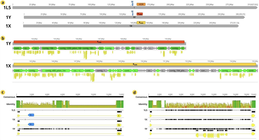
109. Filipović I, Marshall JM, Rašić G (2024) Finding divergent sequences of homomorphic sex chromosomes via diploidized nanopore-based assembly from a single male.
bioRxiv doi: https://doi.org/10.1101/2024.02.29.582759
https://www.biorxiv.org/content/10.1101/2024.02.29.582759v1.full.pdf
bioRxiv doi: https://doi.org/10.1101/2024.02.29.582759
https://www.biorxiv.org/content/10.1101/2024.02.29.582759v1.full.pdf
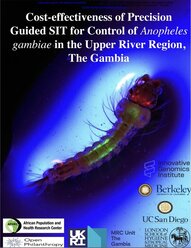
108. Gendron W, Raban R, Mondal A, Sánchez C. HM, Smidler A, Zilberman D, Ilboudo PG, D'Allesandro U, Marshall JM, Akbari OS (2023) Cost-effectiveness of precision guided SIT for control of Anopheles gambiae in the Upper River region, The Gambia. bioRxiv doi: https://doi.org/10.1101/2023.07.20.549762
https://www.biorxiv.org/content/10.1101/2023.07.20.549762v1.full.pdf
https://www.biorxiv.org/content/10.1101/2023.07.20.549762v1.full.pdf
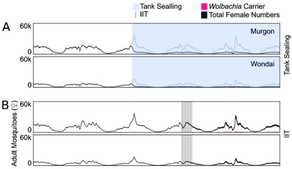
107. Rašić G, Filipović I, Wu SL, León TM, Bennett JB, Sánchez C. HM, Marshall JM, Trewin BJ (2021) Eliminating Aedes aegypti from its southern margin in Australia: Insights from genomic data and simulation modeling. bioRxiv doi: https://doi.org/10.1101/2021.08.21.457232https://www.biorxiv.org/content/10.1101/2021.08.21.457232v1.full.pdf
2024

106. Apte RA, Smidler AL, Pai JJ, Chow ML, Chen S, Mondal A, Sánchez C. HM, Antoshechkin I, Marshall JM, Akbari OS (2024) Eliminating malaria vectors with precision guided sterile males. Proceedings of the National Academies of Sciences USA 121: e2312456121
https://www.pnas.org/doi/10.1073/pnas.2312456121
https://www.pnas.org/doi/10.1073/pnas.2312456121

105. Mondal A*, Sánchez C. HM, Marshall JM* (2024) MGDrivE 3: A decoupled vector-human framework for epidemiological simulation of mosquito genetic control tools and their surveillance.
*Co-corresponding authors
PLoS Computational Biology 20: e1012133
https://journals.plos.org/ploscompbiol/article?id=10.1371/journal.pcbi.1012133
*Co-corresponding authors
PLoS Computational Biology 20: e1012133
https://journals.plos.org/ploscompbiol/article?id=10.1371/journal.pcbi.1012133

104. Sánchez C. HM, Smith DL, Marshall JM (2024) MGSurvE: A framework to optimize trap placement for genetic surveillance of mosquito populations. PLoS Computational Biology 20: e1012046
https://journals.plos.org/ploscompbiol/article?id=10.1371/journal.pcbi.1012046
https://journals.plos.org/ploscompbiol/article?id=10.1371/journal.pcbi.1012046

103. Li M, Kandul N, Sun R, Yang T, Benetta ED, Brogan D, Antoshechkin I, Sánchez C. HM, Zhan YP, DeBeaubien N, Loh Y, Su M, Montell C, Marshall JM, Akbari OS (2024) Targeting sex determination to suppress mosquito populations. eLife 12: RP90199
https://elifesciences.org/articles/90199
https://elifesciences.org/articles/90199
2023
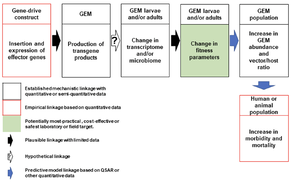
102. Kormos A, Dimopoulos G, Bier E, Lanzaro GC, Marshall JM, James AA (2023) Conceptual risk assessment of mosquito population modification gene-drive systems to control malaria transmission: preliminary hazards list workshops. Frontiers in Bioengineering & Biotechnology 11: 1261123
https://www.frontiersin.org/articles/10.3389/fbioe.2023.1261123
https://www.frontiersin.org/articles/10.3389/fbioe.2023.1261123
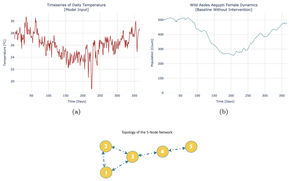
101. Vásquez VN, Marshall JM (2023) Applications of mathematical programming to genetic biocontrol. SIAM Journal on Applied Mathematics S392-S411
https://epubs.siam.org/doi/abs/10.1137/22M1509862
https://epubs.siam.org/doi/abs/10.1137/22M1509862

100. Raban R, Marshall JM, Hay BA, Akbari OS (2023) Manipulating the destiny of wild populations using CRISPR. Annual Review of Genetics 57: 1
https://www.annualreviews.org/doi/abs/10.1146/annurev-genet-031623-105059
https://www.annualreviews.org/doi/abs/10.1146/annurev-genet-031623-105059
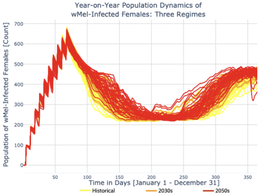
99. Vásquez VN, Kueppers LM, Rašić G, Marshall JM (2023) wMel replacement of dengue-competent mosquitoes is robust to near-term change. Nature Climate Change 13: 848–855
https://www.nature.com/articles/s41558-023-01746-w
Press:
Nature Climate Change: Susceptibility of Wolbachia mosquito control to temperature shifts
Scientific American: Heat waves could kill off human-bred mosquitoes
Politico: Scientists are releasing disease-resistant mosquitoes. But heat waves could kill them.
Nature Climate Change Year in Review: Wolbachia still works when it's warm
https://www.nature.com/articles/s41558-023-01746-w
Press:
Nature Climate Change: Susceptibility of Wolbachia mosquito control to temperature shifts
Scientific American: Heat waves could kill off human-bred mosquitoes
Politico: Scientists are releasing disease-resistant mosquitoes. But heat waves could kill them.
Nature Climate Change Year in Review: Wolbachia still works when it's warm
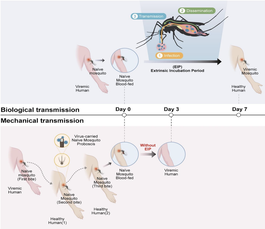
98. Li HH, Su MP, Wu SC, Tsou HH, Chang MC, Cheng YC, Tsai KN, Wang HW, Chen GH, Tang CK, Chung PJ, Tsai WT, Huang LR, Yueh YA, Chen HW, Pan CY, Akbari OS, Chang HH, Yu GY, Marshall JM, Chen CH (2023) Mechanical transmission of dengue virus by Aedes aegypti may influence disease transmission dynamics during outbreaks. eBioMedicine 94: 104723
https://www.thelancet.com/journals/ebiom/article/PIIS2352-3964(23)00288-8/
https://www.thelancet.com/journals/ebiom/article/PIIS2352-3964(23)00288-8/
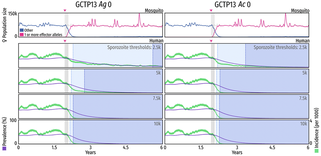
97. Carballar-Lejarazú R, Dong Y, Pham TB, Tushar T, Corder RM, Mondal A, Sánchez C. HM, Lee HF, Marshall JM, Dimopoulos G, James AA (2023) Dual effector population modification gene-drive strains of the African malaria mosquitoes, Anopheles gambiae and Anopheles coluzzii. Proceedings of the National Academy of Sciences USA 120: e2221118120
https://www.pnas.org/doi/10.1073/pnas.2221118120
https://www.pnas.org/doi/10.1073/pnas.2221118120
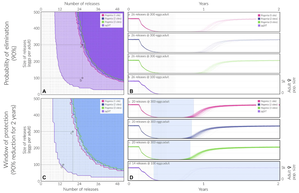
96. Smidler AL, Pai JJ, Apte RA, Sánchez C. HM, Corder RM, Gutiérrez EJ, Thakre N, Antoshechkin I, Marshall JM, Akbari OS (2023) A confinable female-lethal population suppression system in the malaria vector, Anopheles gambiae. Science Advances 9: eade890
https://www.science.org/doi/10.1126/sciadv.ade8903
Press:
UCSD Today: New genetic technology developed to halt malaria-spreading mosquitoes
https://www.science.org/doi/10.1126/sciadv.ade8903
Press:
UCSD Today: New genetic technology developed to halt malaria-spreading mosquitoes
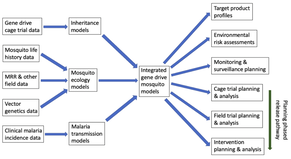
95. Marshall JM, North AR (2023) Modeling priorities as gene drive mosquito projects transition from lab to field. In: Carballar-Lejarazú R (editor), Mosquito Gene Drives and the Malaria Eradication Agenda, Jenny Stanford Publishing, Singapore
https://www.researchgate.net/publication/366861856_Modeling_Priorities_as_Gene_Drive_Mosquito_Projects_Transition_from_Lab_to_Field
https://www.researchgate.net/publication/366861856_Modeling_Priorities_as_Gene_Drive_Mosquito_Projects_Transition_from_Lab_to_Field
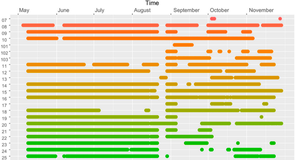
94. Rerolle F, Dantzer E, Phimmakong T, Lover AA, Hongvanthong B, Phetsouvanh R, Marshall JM, Sturrock HJW, Bennett A (2023) Characterizing mobility patterns of forest goers in southern Lao PDR using GPS loggers. Malaria Journal 22: 38
https://malariajournal.biomedcentral.com/articles/10.1186/s12936-023-04468-8
https://malariajournal.biomedcentral.com/articles/10.1186/s12936-023-04468-8
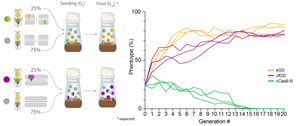
93. Terradas G, Bennett JB, Li Z, Marshall JM, Bier E (2023) Genetic conversion of a split-drive into a full-drive element. Nature Communications 14: 191 https://www.nature.com/articles/s41467-022-35044-4
Press:
Innovative Genomics Institute News: Researchers create new system for safer gene drive testing and development
Press:
Innovative Genomics Institute News: Researchers create new system for safer gene drive testing and development
2022
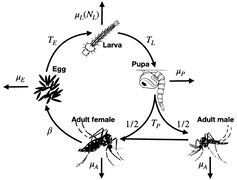
92. Sharma Y, Bennett JB, Rašić G, Marshall JM* (2022) Close-kin mark-recapture methods to estimate demographic parameters of mosquitoes. PLoS Computational Biology 18: e1010755
*Corresponding author
https://journals.plos.org/ploscompbiol/article?id=10.1371/journal.pcbi.1010755
*Corresponding author
https://journals.plos.org/ploscompbiol/article?id=10.1371/journal.pcbi.1010755
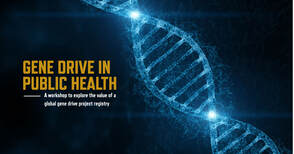
91. Taitingfong RI, Triplett C, Vásquez VN, Rajagopalan RM, Raban R, Roberts A, Terradas G, Baumgartner B, Emerson C, Gould F, Okumu F, Schairer CE, Bossin HC, Buchman L, Campbell KJ, Clark A, Delborne J, Esvelt K, Fisher J, Friedman RM, Gronvall G, Gurfield N, Heitman E, Kofler N, Kuiken T, Kuzma J, Manrique-Saide P, Marshall JM, Montague M, Morrison AC, Opesen CC, Phelan R, Piaggio A, Quemada H, Rudenko L, Sawadogo N, Smith R, Tuten H, Ullah A, Vorsino A, Windbichler N, Akbari OS, Long K, Lavery JV, Evans SW, Tountas K, Bloss CS (2022) Exploring the value of a global gene drive project registry. Nature Biotechnology 41: 9-13
https://www.nature.com/articles/s41587-022-01591-w
Press:
UCSD News: Experts from 14 nations discuss global gene drive project registry
https://www.nature.com/articles/s41587-022-01591-w
Press:
UCSD News: Experts from 14 nations discuss global gene drive project registry
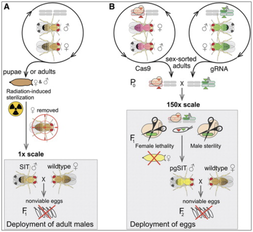
90. Kandul NP, Liu J, Buchman A, Shriner IC, Corder RM, Warsinger-Pepe N, Yang T, Yadav AK, Scott MJ, Marshall JM, Akbari OS (2022) Precision guided sterile males suppress populations of an invasive crop pest. GEN Biotechnology 1: 372-385
https://www.liebertpub.com/doi/10.1089/genbio.2022.0019
Press:
Innovative Genomics Institute News: CRISPR-based technology targets global crop pest
https://www.liebertpub.com/doi/10.1089/genbio.2022.0019
Press:
Innovative Genomics Institute News: CRISPR-based technology targets global crop pest
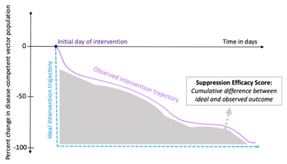
89. Vásquez VN, Reddy MR, Marshall JM (2022) Environmentally appropriate vector control is facilitated by standard metrics for simulation-based evaluation. Frontiers in Tropical Diseases 3: 953212
https://www.frontiersin.org/articles/10.3389/fitd.2022.953212/full
https://www.frontiersin.org/articles/10.3389/fitd.2022.953212/full
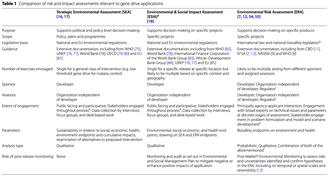
88. Connolly JB, Mumford JD, Glandorf DCM, Hartley S, Lewis OT, Evans SW, Turner G, Beech C, Sykes N, Coulibaly MB, Romeis J, Teem JL, Tonui W, Lovett B, Mankad A, Mnzava A, Fuchs S, Hackett TD, Landis WG, Marshall JM, Aboagye-Antwi F (2022) Recommendations for environmental risk assessment of gene drive applications for malaria vector control. Malaria Journal 21: 152
https://malariajournal.biomedcentral.com/articles/10.1186/s12936-022-04183-w
https://malariajournal.biomedcentral.com/articles/10.1186/s12936-022-04183-w
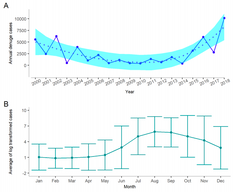
87. Hossain MP, Zhou W, Ren C, Marshall JM, Yuan HY (2022) Determining the effects of preseasonal climate factors toward dengue early warning system in Bangladesh. PLoS Global Public Health 2: e0000047
https://journals.plos.org/globalpublichealth/article?id=10.1371/journal.pgph.0000047
https://journals.plos.org/globalpublichealth/article?id=10.1371/journal.pgph.0000047
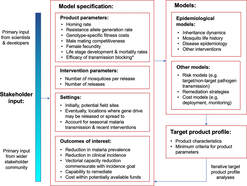
86. Mondal A, Vásquez VN, Marshall JM* (2022) Target product profiles for mosquito gene drives: Incorporating insights from mathematical models. Frontiers in Tropical Diseases 3: 828876
*Corresponding author
https://www.frontiersin.org/articles/10.3389/fitd.2022.828876
*Corresponding author
https://www.frontiersin.org/articles/10.3389/fitd.2022.828876
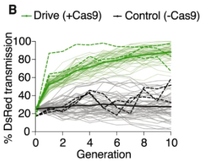
85. Kaduskar B, Kushwah RBS, Auradkar A, Guichard A, Li M, Bennett JB, Ferreira Julio AH, Marshall JM, Montell C, Bier E (2022) Reversing insecticide resistance with allelic-drive in Drosophila melanogaster. Nature Communications 13: 291
https://www.nature.com/articles/s41467-021-27654-1
Press:
UCSD News: Genetic strategy reverses insecticide resistance
Wired: Could CRISPR flip the switch on insects' resistance to pesticides?
https://www.nature.com/articles/s41467-021-27654-1
Press:
UCSD News: Genetic strategy reverses insecticide resistance
Wired: Could CRISPR flip the switch on insects' resistance to pesticides?
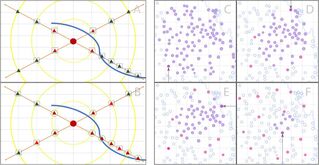
84. Rašić G, Lobo NF, Jeffrey Gutiérrez EH, Sánchez C. HM, Marshall JM* (2022) Monitoring needs for gene drive mosquito projects: Lessons from vector control field trials and invasive species. Frontiers in Genetics 12: 780327
*Corresponding author
https://www.frontiersin.org/articles/10.3389/fgene.2021.780327
*Corresponding author
https://www.frontiersin.org/articles/10.3389/fgene.2021.780327
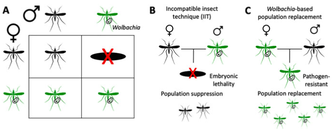
83. Marshall JM, Vásquez VN (2022) Field trials of gene drive mosquitoes: Lessons from releases of genetically sterile males and Wolbachia-infected mosquitoes. In: Tyagi BK (editor), Genetically Modified and other Innovative Vector Control Technologies, Springer, Singapore
https://link.springer.com/chapter/10.1007%2F978-981-16-2964-8_2
https://link.springer.com/chapter/10.1007%2F978-981-16-2964-8_2
2021
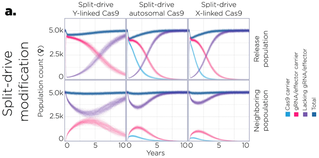
82. Gamez S, Chaverra-Rodriguez D, Buchman A, Kandul NP, Mendez-Sanchez SC, Bennett JB, Sánchez C. HM, Yang T, Antoshechkin I, Duque JE, Papathanos PA, Marshall JM, Akbari OS (2021) Exploiting a Y chromosome-linked Cas9 for sex selection and gene drive. Nature Communications 12: 7202
https://www.nature.com/articles/s41467-021-27333-1
https://www.nature.com/articles/s41467-021-27333-1
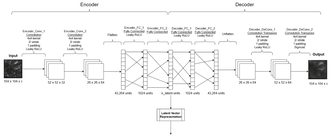
81. Suarez-Ramirez CD, Duran-Vega MA, Sanchez C. HM, Gonzalez-Mendoza M, Chang L, Marshall JM (2021) Deep learning architectures applied to mosquito count regressions in US datasets. In: Batyrshin I, Gelbukh A, Sidorov G (editors), Advances in Computational Intelligence: MICAI 2021, Springer, Cham
https://link.springer.com/chapter/10.1007/978-3-030-89817-5_15
https://link.springer.com/chapter/10.1007/978-3-030-89817-5_15
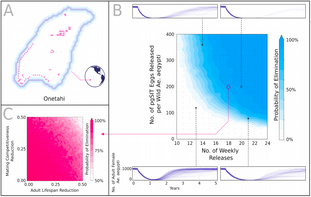
80. Li M, Yang T, Bui M, Gamez S, Wise T, Kandul NP, Liu J, Alcantara L, Lee H, Edula JR, Raban R, Zhan Y, Wang Y, DeBeaubien N, Chan J, Sánchez C. HM, Bennett JB, Antoshechkin I, Montell C, Marshall JM, Akbari OS (2021) Eliminating mosquitoes with precision guided sterile males. Nature Communications 12: 5374https://www.nature.com/articles/s41467-021-25421-w
Press:
Innovative Genomics Institute News: New technology designed to genetically control disease-spreading mosquitoes
Press:
Innovative Genomics Institute News: New technology designed to genetically control disease-spreading mosquitoes
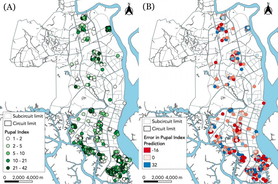
79. Ha T, León TM, Lalangui K, Ponce P, Marshall JM, Cevallos V (2021) Household-level risk factors for Aedes aegypti pupal density in Guayaquil, Ecuador. Parasites & Vectors 14: 458
https://parasitesandvectors.biomedcentral.com/articles/10.1186/s13071-021-04913-0
https://parasitesandvectors.biomedcentral.com/articles/10.1186/s13071-021-04913-0
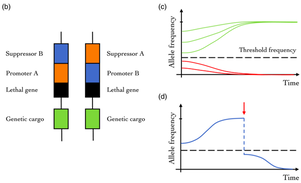
78. Legros M, Marshall JM, Macfadyen S, Hayes KR, Sheppard A, Barrett LG (2021) Gene drive strategies of pest control in agricultural systems: Challenges and opportunities. Evolutionary Applications 14: 2162-2178
https://onlinelibrary.wiley.com/doi/10.1111/eva.13285
https://onlinelibrary.wiley.com/doi/10.1111/eva.13285
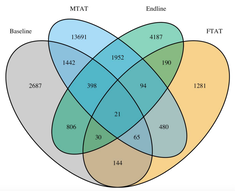
77. Rerolle F, Jacobson JO, Wesson P, Dantzer E, Lover AA, Hongvanthong B, Smith J, Marshall JM, Sturrock HJW, Bennett A (2021) Population size estimation of seasonal forest-going populations in Southern Lao PDR. Nature Scientific Reports 11: 14816 https://www.nature.com/articles/s41598-021-94413-z
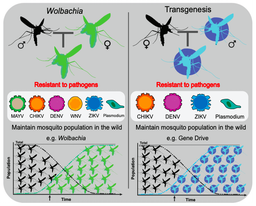
76. Wang GH, Gamez S, Raban RR, Marshall JM, Alphey L, Li M, Rasgon JL, Akbari OS (2021) Combating mosquito-borne diseases using genetic control technologies. Nature Communications 12: 4388
https://www.nature.com/articles/s41467-021-24654-z
https://www.nature.com/articles/s41467-021-24654-z
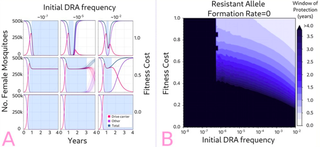
75. Lanzaro GC, Sánchez C. HM, Collier TC, Marshall JM, James AA (2021) Population modification strategies for malaria vector control are uniquely resilient to observed levels of gene drive resistance alleles. BioEssays 43: e2000282
https://onlinelibrary.wiley.com/doi/10.1002/bies.202000282
https://onlinelibrary.wiley.com/doi/10.1002/bies.202000282
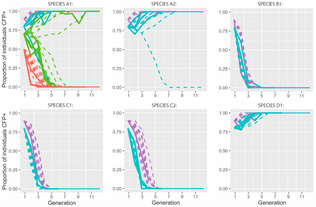
74. Buchman A, Shriner I, Yang T, Liu J, Antoshechkin I, Marshall JM, Perry MW, AkbariOS (2021) Engineered reproductively isolated species drive reversible population replacement. Nature Communications 12: 3281
www.nature.com/articles/s41467-021-23531-z
Press:
UCSD News: Synthetic SPECIES developed for use as a confinable gene drive
www.nature.com/articles/s41467-021-23531-z
Press:
UCSD News: Synthetic SPECIES developed for use as a confinable gene drive
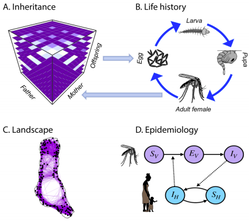
73. Wu S*, Bennett JB, Sánchez C. HM, Dolgert AJ, León TM, Marshall JM* (2021) MGDrivE 2: A simulation framework for gene drive systems incorporating seasonality and epidemiological dynamics. PLoS Computational Biology 17: e1009030
*Co-corresponding authors
https://journals.plos.org/ploscompbiol/article?id=10.1371/journal.pcbi.1009030
*Co-corresponding authors
https://journals.plos.org/ploscompbiol/article?id=10.1371/journal.pcbi.1009030
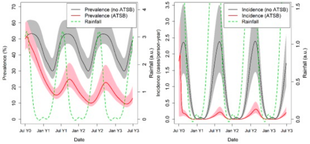
72. Fraser KJ, Mwandigha L, Traore S, Traore M, Doumbia S, Junnila A, Revay E, Beier J, Marshall JM, Ghani AC, Muller G (2021) Estimating the potential of Attractive Targeted Sugar Baits (ATSBs) as a new vector control tool for Plasmodium falciparum malaria. Malaria Journal 20: 151
https://malariajournal.biomedcentral.com/articles/10.1186/s12936-021-03684-4
https://malariajournal.biomedcentral.com/articles/10.1186/s12936-021-03684-4
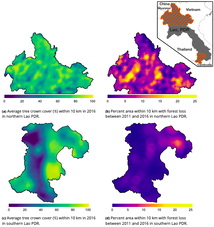
71. Rerolle F, Dantzer E, Lover AA, Marshall JM, Hongvanthong B, Sturrock HJW, Bennett A (2021) Spatio-temporal associations between deforestation and malaria incidence in Lao PDR. eLife 10: e56974
https://elifesciences.org/articles/56974
https://elifesciences.org/articles/56974
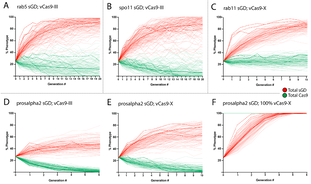
70. Terradas G, Buchman AB, Bennett JB, Shriner I, Marshall JM, Akbari OS, Bier E (2021) Inherently confinable split-drive systems in Drosophila. Nature Communications 12: 1480
https://www.nature.com/articles/s41467-021-21771-7
Press:
UCSD News: New split-drive system puts scientists in the (gene) driver seat
https://www.nature.com/articles/s41467-021-21771-7
Press:
UCSD News: New split-drive system puts scientists in the (gene) driver seat
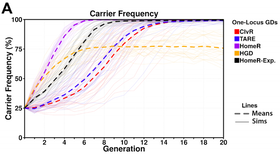
69. Kandul NP, Liu J, Bennett JB, Marshall JM, Akbari OS (2021) A home and rescue gene drive forces its inheritance stably persisting in populations. eLife 10: e65939
https://elifesciences.org/articles/65939
Press:
UCSD News: New split-drive system puts scientists in the (gene) driver seat
https://elifesciences.org/articles/65939
Press:
UCSD News: New split-drive system puts scientists in the (gene) driver seat
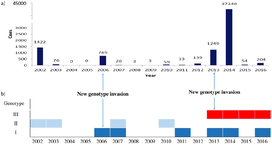
68. Ma M, Wu SL, He Z, Yuan L, Bai Z, Jiang L, Marshall JM, Lu J, Yang Z, Jing QL (2021) New genotype invasion of dengue virus serotype 1 drove massive outbreak in Guangzhou, China. Parasites & Vectors 14: 126
https://link.springer.com/article/10.1186/s13071-021-04631-7
https://link.springer.com/article/10.1186/s13071-021-04631-7
2020

67. Kormos A, Lanzaro GC, Bier E, Dimopoulos G, Marshall JM, Pinto J, dos Santos AA, Bacar A, Sacramento Rompão HSP, James AA (2020) Application of the relationship-based model to engagement for field trials of genetically engineered malaria vectors. American Journal of Tropical Medicine and Hygiene 104: 805-811
http://www.ajtmh.org/content/journals/10.4269/ajtmh.20-0868
http://www.ajtmh.org/content/journals/10.4269/ajtmh.20-0868
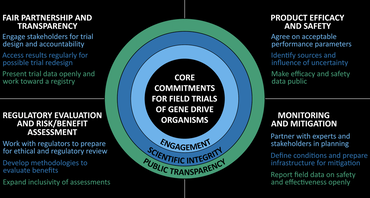
66. Long KC, Alphey L, Annas GJ, Bloss CS, Campbell KJ, Champer J, Chen CH, Choudhary A, Church GM, Collins JP, Cooper KL, Delborne JA, Edwards OR, Emerson CI, Esvelt K, Evans SW, Friedman RM, Gantz VM, Gould F, Hartley S, Heitman E, Hemingway J, Kanuka H, Kuzma J, Lavery JV, Lee Y, Lorenzen M, Lunshof JE, Marshall JM, Messer PW, Montell C, Oye KA, Palmer MJ, Papathanos PA, Paradkar PN, Piaggio AJ, Rasgon JL, Rašić G, Rudenko L, Saah JR, Scott MJ, Sutton JT, Vorsino AE, Akbari OS (2020) Core commitments for field trials of gene drive organisms. Science 370: 1417-1419
https://science.sciencemag.org/content/370/6523/1417
Press:
UCSD News: Scientists set a path for field trials of gene drive organisms
https://science.sciencemag.org/content/370/6523/1417
Press:
UCSD News: Scientists set a path for field trials of gene drive organisms
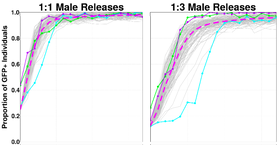
65. Adolfi A, Gantz VM, Jasinskiene N, Lee HF, Hwang K, Bulger EA, Ramaiah A, Bennett JB, Terradas G, Emerson JJ, Marshall JM, Bier E, James AA (2020) Efficient population modification gene-drive rescue system in the malaria mosquito Anopheles stephensi. Nature Communications 11: 5553
https://www.nature.com/articles/s41467-020-19426-0
Press:
UCI News: UC researchers pioneer more effective method of blocking malaria transmission in mosquitoes
https://www.nature.com/articles/s41467-020-19426-0
Press:
UCI News: UC researchers pioneer more effective method of blocking malaria transmission in mosquitoes
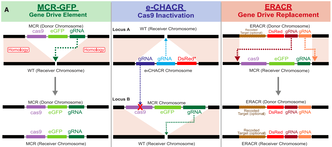
64. Xu XS, Bulger EA, Gantz VM, Klanseck C, Heimler SR, Auradkar A, Bennett JB, Miller LA, Leahy S, Juste SS, Buchman A, Akbari OS, Marshall JM, Bier E (2020) Active genetic neutralizing elements for halting or deleting gene drives. Molecular Cell 80: 246-262
https://www.sciencedirect.com/science/article/pii/S1097276520306110
Press:
UCSD News: Biologists create new genetic systems to neutralize gene drives
https://www.sciencedirect.com/science/article/pii/S1097276520306110
Press:
UCSD News: Biologists create new genetic systems to neutralize gene drives
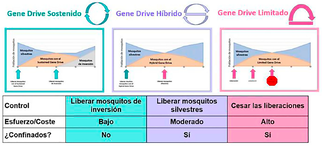
63. Cheung C, Gamez S, Carballar-Lejarazú R, Ferman V, Vásquez VN, Terradas G, Ishikawa J, Schairer CE, Bier E, Marshall JM, James AA, Akbari OS, Bloss CS (2020) Translating gene drive science to promote linguistic diversity in community and stakeholder engagement. Global Public Health 15(10):1551-1565
https://www.tandfonline.com/doi/full/10.1080/17441692.2020.1779328
https://www.tandfonline.com/doi/full/10.1080/17441692.2020.1779328
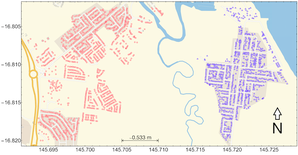
62. Sánchez C. HM, Bennett JB, Wu SL, Rašić G, Akbari OS, Marshall JM* (2020) Confinement and reversibility of threshold-dependent gene drive systems in spatially-explicit Aedes aegypti populations. BMC Biology 18: 50
*Corresponding author
https://bmcbiol.biomedcentral.com/articles/10.1186/s12915-020-0759-9
*Corresponding author
https://bmcbiol.biomedcentral.com/articles/10.1186/s12915-020-0759-9
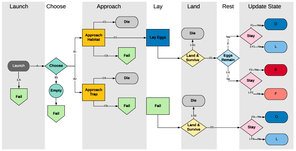
61. Wu SL, Sánchez C. HM, Henry JM, Citron DT, Zhang Q, Compton KE, Liang B, Verma A, Cummings DAT, Le Menach A, Scott TW, Wilson AL, Lindsay SW, Moyes CL, Hancock PA, Russell TL, Burkot TR, Marshall JM, Kiware S, Reiner RC, Smith DL (2020) Vector bionomics and vectorial capacity as emergent properties of mosquito behaviors and ecology. PLoS Computational Biology 16: e1007446
https://journals.plos.org/ploscompbiol/article?id=10.1371/journal.pcbi.1007446
https://journals.plos.org/ploscompbiol/article?id=10.1371/journal.pcbi.1007446
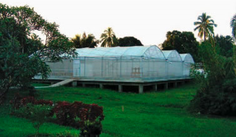
60. James SL, Marshall JM, Christophides GK, Okumu FO, Nolan T (2020) Toward the definition of efficacy and safety criteria for advancing gene drive-modified mosquitoes to field testing. Vector-Borne and Zoonotic Diseases 20: 237–251
https://www.liebertpub.com/doi/full/10.1089/vbz.2019.2606
https://www.liebertpub.com/doi/full/10.1089/vbz.2019.2606
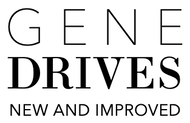
59. Friedman RM, Marshall JM, Akbari OS (2020) Gene drives: New and improved. Issues in Science and Technology 36: 72-78
https://issues.org/gene-drives/
https://issues.org/gene-drives/
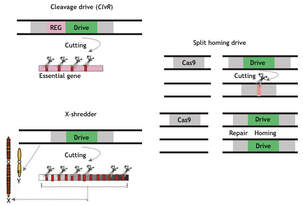
58. Raban RR, Marshall JM, Akbari OS (2020) Progress toward engineering gene drives for population control. Journal of Experimental Biology 223: jeb208181
https://journals.biologists.com/jeb/article/223/Suppl_1/jeb208181/224576/Progress-towards-engineering-gene-drives-for
https://journals.biologists.com/jeb/article/223/Suppl_1/jeb208181/224576/Progress-towards-engineering-gene-drives-for
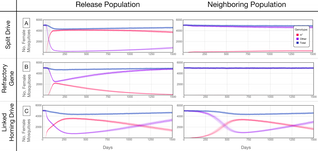
57. Li M, Yang T, Kandul NP, Bui M, Gamez S, Raban R, Bennett JB, Sánchez C. HM, Lanzaro GC, Schmidt H, Lee Y, Marshall JM, Akbari OS (2020) Development of a confinable gene-drive system in the human disease vector, Aedes aegypti. eLife 9: e51701
https://elifesciences.org/articles/51701
https://elifesciences.org/articles/51701

56. López VD, Bishop AL, Sánchez C. HM, Bennett JB, Feng X, Marshall JM, Bier E, Gantz VM (2020) A transcomplementing gene drive provides a flexible platform for laboratory investigation and potential field deployment. Nature Communications 11: 352
https://www.nature.com/articles/s41467-019-13977-7
https://www.nature.com/articles/s41467-019-13977-7
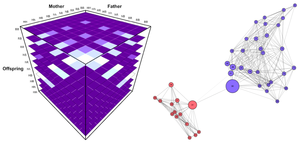
55. Sánchez C. HM*, Wu SL, Bennett JB, Marshall JM* (2020) MGDrivE: A modular simulation framework for the spread of gene drives through spatially-explicit mosquito populations. Methods in Ecology and Evolution 11: 229-239
*Co-corresponding authors
https://besjournals.onlinelibrary.wiley.com/doi/full/10.1111/2041-210X.13318
*Co-corresponding authors
https://besjournals.onlinelibrary.wiley.com/doi/full/10.1111/2041-210X.13318
2019
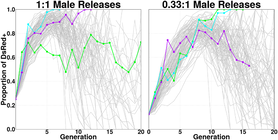
54. Pham TB, Phong CH, Bennett JB, Hwang K, Jasinskiene N, Parker K, Stillinger D, Marshall JM, Carballar-Lejarazú R, James AA (2019) Experimental population modification of the malaria vector mosquito, Anopheles stephensi. PLoS Genetics 15: e1008440
https://journals.plos.org/plosgenetics/article?id=10.1371/journal.pgen.1008440
https://journals.plos.org/plosgenetics/article?id=10.1371/journal.pgen.1008440
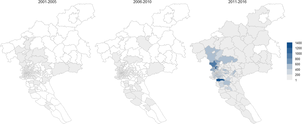
53. Zhang Z, Jing Q, Chen Z, Li T, Jiang L, Li Y, Luo L, Marshall JM, Yang Z (2019) The increasing menace of dengue in Guangzhou, 2001–2016: The most important epicenter in mainland China. BMC Infectious Diseases 19: 1002
https://link.springer.com/article/10.1186/s12879-019-4504-3
https://link.springer.com/article/10.1186/s12879-019-4504-3
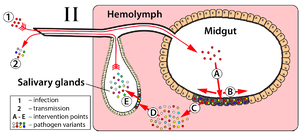
52. Marshall JM, Raban RR, Kandul NP, Edula JR, León TM, Akbari OS (2019) Winning the tug-of-war between effector gene design and pathogen evolution in vector population replacement strategies. Frontiers in Genetics 10: 1072
https://www.frontiersin.org/articles/10.3389/fgene.2019.01072/full
https://www.frontiersin.org/articles/10.3389/fgene.2019.01072/full
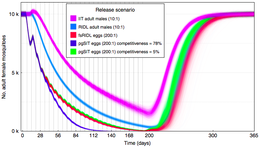
51. Kandul NP, Liu J, Sánchez C. HM, Wu SL, Marshall JM, Akbari OS (2019) Reply to 'Concerns about the feasibility of using "precision guided sterile males" to control insects'. Nature Communications 10: 3955
https://www.nature.com/articles/s41467-019-11617-8
https://www.nature.com/articles/s41467-019-11617-8
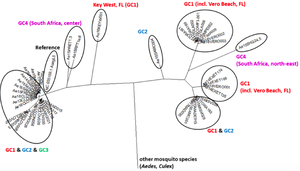
50. Lee Y, Schmidt H, Collier TC, Conner WR, Hanemaaijer MJ, Slatkin M, Marshall JM, Chiu JC, Smartt CT, Lanzaro GC, Mulligan FS, Cornel AJ (2019) Genome-wide divergence among invasive populations of Aedes aegypti in California. BMC Genomics 20: 204
https://link.springer.com/article/10.1186%2Fs12864-019-5586-4
https://link.springer.com/article/10.1186%2Fs12864-019-5586-4
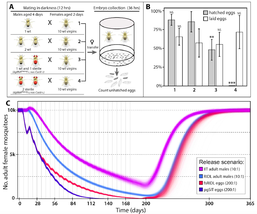
49. Kandul NP, Liu J, Sánchez C. HM, Wu SL, Marshall JM, Akbari OS (2019) Transforming insect population control with precision guided sterile males. Nature Communications 10: 84
https://www.nature.com/articles/s41467-018-07964-7
Press:
UCSD News: New CRISPR-based technology developed to control pests with precision-guided genetics
GEN: Gene drive alternative could lead pesky insects to dead ends
https://www.nature.com/articles/s41467-018-07964-7
Press:
UCSD News: New CRISPR-based technology developed to control pests with precision-guided genetics
GEN: Gene drive alternative could lead pesky insects to dead ends
2018
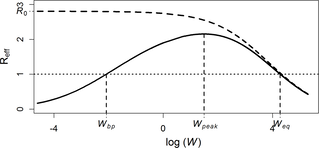
48. Arakala A, Hoover CM, Marshall JM, Sokolow SH, De Leo GA, Rohr JR, Remais JV, Gambhir M (2018) Empirical estimation of the effective reproduction number of schistosomiasis: Methods and implications for macroparasitic disease elimination feasibility. PLoS Neglected Tropical Diseases 12: e0006794
https://journals.plos.org/plosntds/article?id=10.1371/journal.pntd.0006794
https://journals.plos.org/plosntds/article?id=10.1371/journal.pntd.0006794
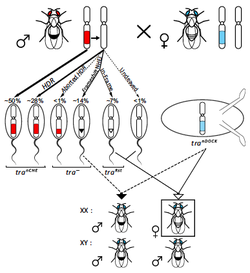
47. Carami EM, Eckermann KN, Ahmed HMM, Sánchez C. HM, Dippel S, Marshall JM, Wimmer EA (2018) Consequences of resistance evolution in a Cas9-based sex-conversion suppression gene drive for insect pest management. Proceedings of the National Academy of Sciences USA 115: 6189-6194
https://www.pnas.org/doi/full/10.1073/pnas.1713825115
https://www.pnas.org/doi/full/10.1073/pnas.1713825115
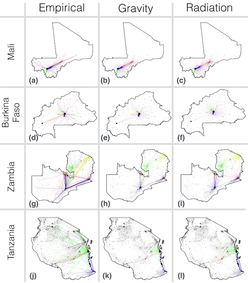
46. Marshall JM, Wu SL, Sánchez C. HM, Kiware SS, Ndhlovu M, Ouédraogo AL, Touré MB, Sturrock HJ, Ghani AC, Ferguson NM (2018) Mathematical models of human mobility of relevance to malaria transmission in Africa. Nature Scientific Reports 8: 7713
https://www.nature.com/articles/s41598-018-26023-1
https://www.nature.com/articles/s41598-018-26023-1
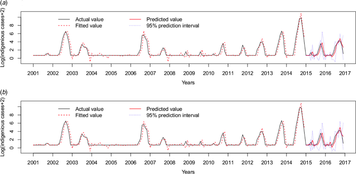
45. Jing QL, Cheng Q, Marshall JM, Hu WB, Yang ZC, Lu JH (2018) Imported cases and minimum temperature drive dengue transmission in Guangzhou, China: Evidence from an ARIMAX model. Epidemiology & Infection 146: 1226-1235
https://www.cambridge.org/core/journals/epidemiology-and-infection/article/imported-cases-and-minimum-temperature-drive-dengue-transmission-in-guangzhou-china-evidence-from-arimax-model/26D6CE21F73579E5DF00EF720845EC62
https://www.cambridge.org/core/journals/epidemiology-and-infection/article/imported-cases-and-minimum-temperature-drive-dengue-transmission-in-guangzhou-china-evidence-from-arimax-model/26D6CE21F73579E5DF00EF720845EC62
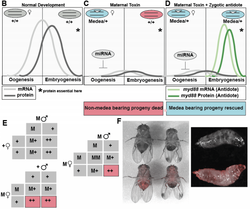
44. Buchman A, Marshall JM, Ostrovski D, Yang T, Akbari OS (2018) Synthetically engineered Medea gene drive system in the worldwide crop pest Drosophila suzukii. Proceedings of the National Academy of Sciences USA 115: 4725-4730
http://www.pnas.org/content/early/2018/04/16/1713139115/
Press:
UCSD News: Researchers develop first gene drive targeting worldwide crop pest
http://www.pnas.org/content/early/2018/04/16/1713139115/
Press:
UCSD News: Researchers develop first gene drive targeting worldwide crop pest
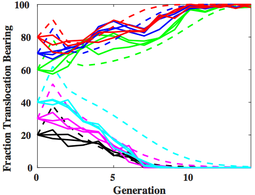
43. Buchman A, Ivy T, Marshall JM, Akbari OS, Hay BA (2018) Engineered reciprocal chromosome translocations drive high threshold, reversible population replacement in Drosophila. ACS Synthetic Biology 7: 1359-1370
https://pubs.acs.org/doi/10.1021/acssynbio.7b00451
https://pubs.acs.org/doi/10.1021/acssynbio.7b00451
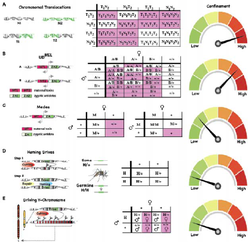
42. Marshall JM*, Akbari OS* (2018) Can CRISPR-based gene drive be confined in the wild? A question for molecular and population biology. ACS Chemical Biology 13: 424-430
*Co-corresponding authors
https://pubs.acs.org/doi/10.1021/acschembio.7b00923
*Co-corresponding authors
https://pubs.acs.org/doi/10.1021/acschembio.7b00923
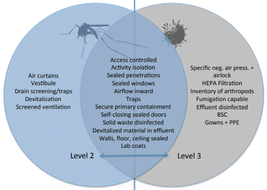
41. Benedict MQ, Burt A, Capurro ML, De Barro P, Handler AM, Hayes KR, Marshall JM, Tabachnick WJ, Adelman ZN (2018) Recommendations for laboratory containment and management of gene drive systems in arthropods. Vector-Borne and Zoonotic Diseases 18: 2-13
http://online.liebertpub.com/doi/full/10.1089/vbz.2017.2121
http://online.liebertpub.com/doi/full/10.1089/vbz.2017.2121
2017
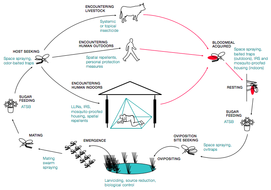
40. Kiware SS, Chitnis N, Tatarsky A, Wu SL, Sánchez C. HM, Gosling R, Smith DL, Marshall JM (2017) Attacking the mosquito on multiple fronts: Insights from the Vector Control Optimization Model (VCOM) for malaria elimination. PLoS ONE 12: e0187680
http://journals.plos.org/plosone/article?id=10.1371/journal.pone.0187680
http://journals.plos.org/plosone/article?id=10.1371/journal.pone.0187680
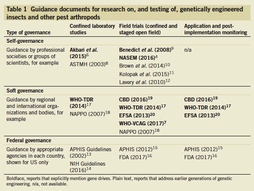
39. Adelman Z, Akbari OS, Bauer J, Bier E, Bloss C, Carter SR, Callender C, Costero-Saint Denis A, Cowhey P, Dass B, Delborne J, Devereaux M, Ellsworth P, Friedman RM, Gantz V, Hay BA, Hoddle M, James AA, James S, Jorgenson L, Kalichman M, Marshall JM, McGinnis W, Newman J, Pearson A, Quemada H, Rudenko L, Shelton A, Vinetz JM, Weisman J, Wong B, Wozniak C (2017) Rules of the road for insect gene drive research and testing. Nature Biotechnology 35: 716-718
https://www.nature.com/articles/nbt.3926
https://www.nature.com/articles/nbt.3926
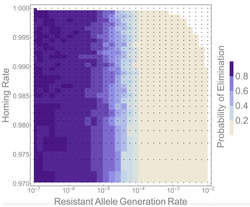
38. Marshall JM*, Buchman A, Sánchez C. HM, Akbari OS* (2017) Overcoming evolved resistance to population-suppressing homing-based gene drives. Nature Scientific Reports 7: 3776
*Co-corresponding authors
https://www.nature.com/articles/s41598-017-02744-7
Press:
Berkeley News: New gene-editing technique could drive out mosquito-borne disease
Daily Californian: Campus researchers discover potential to reduce mosquito-borne diseases through CRISPR technology
The Scientist: Researchers propose solution to gene drive technology problem
*Co-corresponding authors
https://www.nature.com/articles/s41598-017-02744-7
Press:
Berkeley News: New gene-editing technique could drive out mosquito-borne disease
Daily Californian: Campus researchers discover potential to reduce mosquito-borne diseases through CRISPR technology
The Scientist: Researchers propose solution to gene drive technology problem
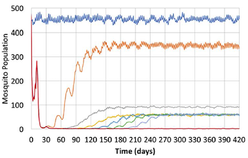
37. Zhu L, Muller GC, Marshall JM, Arheart KL, Qualls WA, Hlaing WM, Schlein Y, Traore SF, Doumbia S, Beier JC (2017) Is outdoor vector control needed for malaria elimination? An individual-based modelling study. Malaria Journal 16: 266
https://malariajournal.biomedcentral.com/articles/10.1186/s12936-017-1920-y
https://malariajournal.biomedcentral.com/articles/10.1186/s12936-017-1920-y
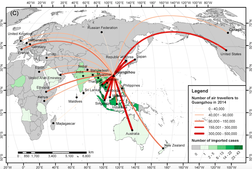
36. Cheng Q, Jing Q, Spear RC, Marshall JM, Yang Z, Gong P (2017) The interplay of climate, intervention and imported cases as determinants of the 2014 dengue outbreak in Guangzhou. PLoS NTDs 11: e0005701
http://journals.plos.org/plosntds/article?id=10.1371/journal.pntd.0005701
http://journals.plos.org/plosntds/article?id=10.1371/journal.pntd.0005701
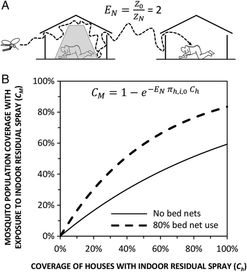
35. Killeen GF, Marshall JM, Kiware SS, Andy S, Chaki PP, Govella NJ (2017) Measuring, manipulating and exploiting behaviors of adult mosquitoes to optimize malaria vector control impact. BMJ Global Health 2: e000212
http://gh.bmj.com/content/2/2/e000212
http://gh.bmj.com/content/2/2/e000212
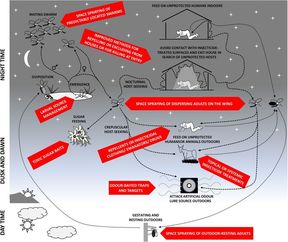
34. Killeen GF, Tatarsky A, Diabate A, Chaccour CJ, Marshall JM, Okumu FO, Brunner S, Newby G, Williams YA, Malone D, Tusting LS, Gosling RD (2017) Developing an expanded vector control toolbox for malaria elimination. BMJ Global Health 2: e000211
http://gh.bmj.com/content/2/2/e000211
http://gh.bmj.com/content/2/2/e000211
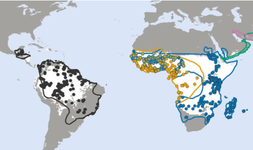
33. Killeen GF, Kiware SS, Okumu FO, Sinka ME, Moyes CL, Massey NC, Gething PW, Marshall JM, Chaccour CJ, Tusting LS (2017) Going beyond personal protection against mosquito bites to eliminate malaria transmission: population suppression of malaria vectors that exploit both human and animal blood. BMJ Global Health 2: e000198
http://gh.bmj.com/content/2/2/e000198
http://gh.bmj.com/content/2/2/e000198
2016
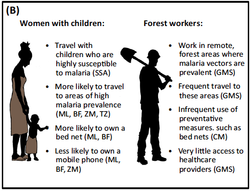
32. Marshall JM, Bennett A, Kiware SS, Sturrock HJW (2016) The hitchhiking parasite: Why human movement matters to malaria transmission and what we can do about it. Trends in Parasitology 32: 752-755
https://www.cell.com/trends/parasitology/abstract/S1471-4922(16)30102-7
https://www.cell.com/trends/parasitology/abstract/S1471-4922(16)30102-7
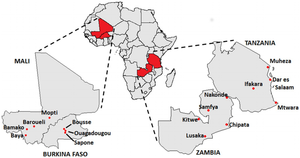
31. Marshall JM, Touré MB, Ouédraogo AL, Ndhlovu M, Kiware SS, Rezai A, Nkhama E, Griffin JT, Hollingsworth DT, Doumbia S, Govella NJ, Ferguson NM, Ghani AC (2016) Key traveller groups of relevance to spatial malaria transmission: A survey of movement patterns in four sub-Saharan African countries. Malaria Journal 15: 200
https://malariajournal.biomedcentral.com/articles/10.1186/s12936-016-1252-3
https://malariajournal.biomedcentral.com/articles/10.1186/s12936-016-1252-3
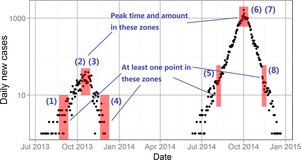
30. Cheng Q, Jing Q, Spear RC, Marshall JM, Yang Z, Gong P (2016) Climate and the timing of imported cases as determinants of the dengue outbreak in Guangzhou, 2014: Evidence from a mathematical model. PLoS NTDs 10: e0004417
http://journals.plos.org/plosntds/article?id=10.1371/journal.pntd.0004417
http://journals.plos.org/plosntds/article?id=10.1371/journal.pntd.0004417
2015
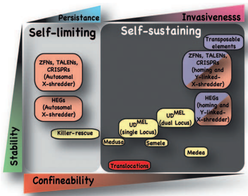
29. Marshall JM, Akbari OS (2015) Gene drive strategies for population replacement. In: Adelman ZN (editor), Genetic Control of Dengue and Malaria, Elselvier/Academic Press, New York
https://www.researchgate.net/publication/301256516_Gene_Drive_Strategies_for_Population_Replacement
https://www.researchgate.net/publication/301256516_Gene_Drive_Strategies_for_Population_Replacement
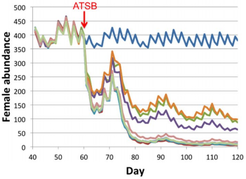
28. Zhu L, Marshall JM, Qualls WA, Schlein Y, McManus JW, Arheart KL, Hlaing WM, Traore SF, Doumbia S, Müller GC, Beier JC (2015) Modeling optimum use of attractive toxic sugar bait stations for effective malaria vector control in Africa. Malaria Journal 14: 492
https://malariajournal.biomedcentral.com/articles/10.1186/s12936-015-1012-9
https://malariajournal.biomedcentral.com/articles/10.1186/s12936-015-1012-9
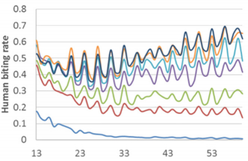
27. Zhu L, Qualls WA, Marshall JM, Arheart KL, DeAngelis DL, McManus JW, Traore SF, Doumbia S, Schlein Y, Müller GC, Beier JC (2015) A spatial individual-based model predicting a great impact of copious sugar sources and resting sites on survival of Anopheles gambiae and malaria parasite transmission. Malaria Journal 14: 59
https://malariajournal.biomedcentral.com/articles/10.1186/s12936-015-0555-0
https://malariajournal.biomedcentral.com/articles/10.1186/s12936-015-0555-0
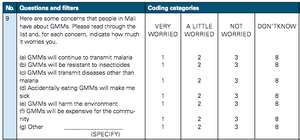
26. Marshall JM (2015) Measuring public attitudes to releases of transgenic mosquitoes for disease control. In: Tyagi BK (editor), WHO/TDR Training Manual: Biosafety for Human Health and the Environment in the Context of the Potential Use of Genetically Modified Mosquitoes, WHO Press, Geneva
https://www.researchgate.net/publication/379477187_Measuring_public_attitudes_to_releases_of_transgenic_mosquitoes_for_disease_control
https://www.researchgate.net/publication/379477187_Measuring_public_attitudes_to_releases_of_transgenic_mosquitoes_for_disease_control
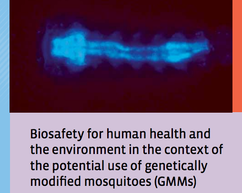
25. Marshall JM (2015) The Cartagena Protocol and releases of transgenic mosquitoes. In: Tyagi BK (editor), WHO/TDR Training Manual: Biosafety for Human Health and the Environment in the Context of the Potential Use of Genetically Modified Mosquitoes, WHO Press, Geneva
https://www.researchgate.net/publication/379477043_The_Cartagena_Protocol_and_releases_of_transgenic_mosquitoes
https://www.researchgate.net/publication/379477043_The_Cartagena_Protocol_and_releases_of_transgenic_mosquitoes
2014
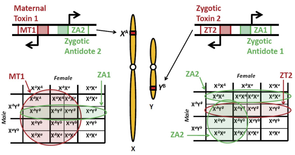
24. Marshall JM, Hay BA (2014) Medusa: A novel gene drive system for confined suppression of mosquito populations. PLoS ONE 9: e102694
http://journals.plos.org/plosone/article?id=10.1371/journal.pone.0102694
Press:
IGTRCN: Medusa: Harnessing a sex-linked transgenic drive system to control insect populations
http://journals.plos.org/plosone/article?id=10.1371/journal.pone.0102694
Press:
IGTRCN: Medusa: Harnessing a sex-linked transgenic drive system to control insect populations

23. Okorie PN, Marshall JM, Akpa MO, George AO (2014) Perceptions and recommendations by scientists for a potential release of genetically modified mosquitoes in Nigeria. Malaria Journal 13: 154
https://malariajournal.biomedcentral.com/articles/10.1186/1475-2875-13-154
Press:
SciDev.Net: Nigerian scientists wary of anti-malarial GM mosquitoes
https://malariajournal.biomedcentral.com/articles/10.1186/1475-2875-13-154
Press:
SciDev.Net: Nigerian scientists wary of anti-malarial GM mosquitoes
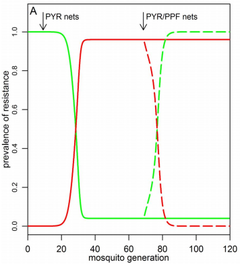
22. White MT, Lwetoijera D, Marshall JM, Caron-Lormier G, Bohan DA, Denholm I, Devine GJ (2014) Negative cross resistance mediated by co-treated bed nets: A potential means of restoring pyrethroid-susceptibility to malaria vectors. PLoS ONE 9: e95640
http://www.plosone.org/article/info:doi/10.1371/journal.pone.0095640
http://www.plosone.org/article/info:doi/10.1371/journal.pone.0095640
2013
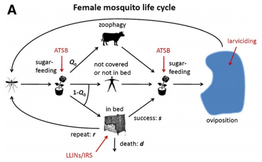
21. Marshall JM, White MT, Ghani AC, Schlein Y, Muller GC, Beier JC (2013) Quantifying the mosquito’s sweet tooth: Modeling the effectiveness of attractive toxic sugar baits (ATSB) for malaria vector control. Malaria Journal 12: 291
https://malariajournal.biomedcentral.com/articles/10.1186/1475-2875-12-291
https://malariajournal.biomedcentral.com/articles/10.1186/1475-2875-12-291
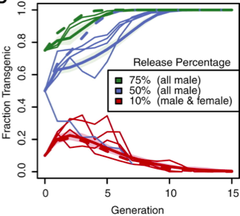
20. Akbari OS*, Matzen KD*, Marshall JM*, Huang H, Ward CM, Hay BA (2013) A synthetic gene drive system for local, reversible modification and suppression of insect populations. Current Biology 23: 671-677
*Equal contribution
http://www.cell.com/current-biology/fulltext/S0960-9822(13)00266-2
Press:
Current Biology: Insect biotechnology: Controllable replacement of disease vectors
*Equal contribution
http://www.cell.com/current-biology/fulltext/S0960-9822(13)00266-2
Press:
Current Biology: Insect biotechnology: Controllable replacement of disease vectors
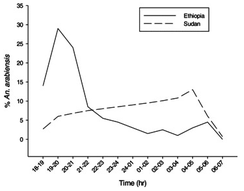
19. Gatton ML, Chitnis N, Churcher T, Donnelly MJ, Ghani AC, Godfray HCJ, Gould F, Hastings I, Marshall JM, Ranson H, Rowland M, Shaman J, Lindsay SW (2013) The importance of mosquito behavioral adaptations to malaria control in Africa. Evolution 67: 1218-1230
https://www.ncbi.nlm.nih.gov/pmc/articles/PMC3655544/
https://www.ncbi.nlm.nih.gov/pmc/articles/PMC3655544/
2012
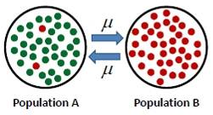
18. Marshall JM, Hay BA (2012) Confinement of gene drive systems to local populations: A comparative analysis. Journal of Theoretical Biology 294: 153-171
https://www.ncbi.nlm.nih.gov/pmc/articles/PMC3260013/
https://www.ncbi.nlm.nih.gov/pmc/articles/PMC3260013/
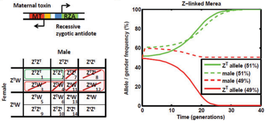
17. Marshall JM, Hay BA (2012) General principles of single-construct chromosomal gene drive. Evolution 66: 2150-2166
https://www.ncbi.nlm.nih.gov/pmc/articles/PMC3389707/
https://www.ncbi.nlm.nih.gov/pmc/articles/PMC3389707/
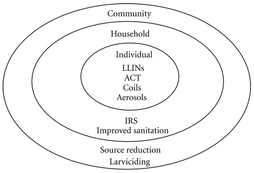
16. De Silva P, Marshall JM (2012) Factors contributing to urban malaria transmission in sub-Saharan Africa: A systematic review. Journal of Tropical Medicine 2012: 819563
https://www.hindawi.com/journals/jtm/2012/819563/
https://www.hindawi.com/journals/jtm/2012/819563/
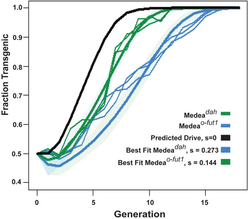
15. Akbari OS*, Chen CH*, Marshall JM*, Huang H, Antoshechkin I, Hay BA (2012) Novel synthetic Medea selfish genetic elements drive population replacement in Drosophila; A theoretical exploration of Medea-dependent population suppression. ACS Synthetic Biology 3: 915-928
*Equal contribution
https://www.ncbi.nlm.nih.gov/pmc/articles/PMC3742681/
*Equal contribution
https://www.ncbi.nlm.nih.gov/pmc/articles/PMC3742681/
2011
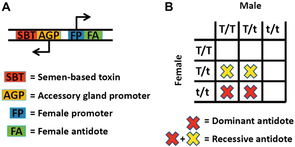
14. Marshall JM, Pittman GW, Buchman A, Hay BA (2011) Semele: A killer-male, rescue-female system for suppression and replacement of insect disease vector populations. Genetics 187: 535-551
http://www.genetics.org/content/187/2/535
Press:
Deutsche Welle: New model may revolutionize mosquito-borne disease control
Science Daily: Pesticide-free method takes a bite out of mosquito-borne disease
http://www.genetics.org/content/187/2/535
Press:
Deutsche Welle: New model may revolutionize mosquito-borne disease control
Science Daily: Pesticide-free method takes a bite out of mosquito-borne disease
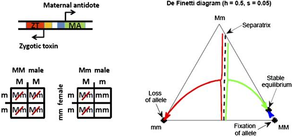
13. Marshall JM, Hay BA (2011) Inverse Medea as a novel gene drive system for local population replacement: A theoretical analysis. Journal of Heredity 102: 336-341
https://www.ncbi.nlm.nih.gov/pmc/articles/PMC3076586/
https://www.ncbi.nlm.nih.gov/pmc/articles/PMC3076586/
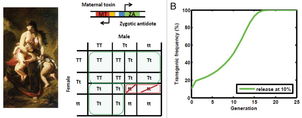
12. Marshall JM (2011) The toxin and antidote puzzle: New ways to control insect pest populations through manipulating inheritance. Bioengineered Bugs 2: 1-6
https://www.ncbi.nlm.nih.gov/pmc/articles/PMC3225740/
https://www.ncbi.nlm.nih.gov/pmc/articles/PMC3225740/
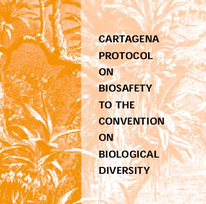
11. Marshall JM (2011) The Cartagena Protocol in the context of recent releases of transgenic and Wolbachia-infected mosquitoes. Asia-Pacific Journal of Molecular Biology & Biotechnology 19: 93-100
https://www.researchgate.net/publication/289159866_The_Cartagena_Protocol_in_the_context_of_recent_releases_of_transgenic_and_Wolbachia-infected_mosquitoes
https://www.researchgate.net/publication/289159866_The_Cartagena_Protocol_in_the_context_of_recent_releases_of_transgenic_and_Wolbachia-infected_mosquitoes
2010
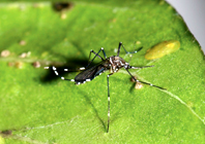
10. Marshall JM (2010) The Cartagena Protocol and genetically modified mosquitoes. Nature Biotechnology 28: 896-897
https://www.nature.com/articles/nbt0910-896
Press:
SciDev.Net: Biosafety meeting “must address GM insects”
https://www.nature.com/articles/nbt0910-896
Press:
SciDev.Net: Biosafety meeting “must address GM insects”

9. Marshall JM, Touré MB, Traore MM, Famenini S, Taylor CE (2010) Perspectives of people in Mali toward genetically modified mosquitoes for malaria control. Malaria Journal 9: 128
https://malariajournal.biomedcentral.com/articles/10.1186/1475-2875-9-128
https://malariajournal.biomedcentral.com/articles/10.1186/1475-2875-9-128
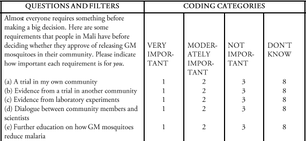
8. Marshall JM, Touré MB, Traore MM, Taylor CE (2010) Towards a quantitative assessment of public attitudes to transgenic mosquitoes: Questions based on a qualitative survey in Mali. Asia-Pacific Journal of Molecular Biology & Biotechnology 18: 251-273
https://www.researchgate.net/publication/285868695_Towards_a_quantitative_assessment_of_public_attitudes_to_transgenic_mosquitoes_Questions_based_on_a_qualitative_survey_in_Mali
https://www.researchgate.net/publication/285868695_Towards_a_quantitative_assessment_of_public_attitudes_to_transgenic_mosquitoes_Questions_based_on_a_qualitative_survey_in_Mali
2009
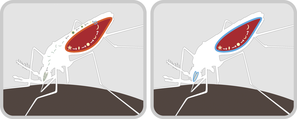
7. Marshall JM, Taylor CE (2009) Malaria control with transgenic mosquitoes. PLoS Medicine 6: e1000020
http://journals.plos.org/plosmedicine/article?id=10.1371/journal.pmed.1000020
http://journals.plos.org/plosmedicine/article?id=10.1371/journal.pmed.1000020
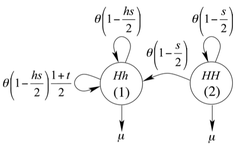
6. Marshall JM (2009) The effect of gene drive on containment of transgenic mosquitoes. Journal of Theoretical Biology 258: 250-265
https://www.sciencedirect.com/science/article/abs/pii/S0022519309000496
https://www.sciencedirect.com/science/article/abs/pii/S0022519309000496
2008
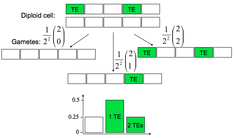
5. Marshall JM (2008) A branching process model for the early spread of a transposable element in a diploid population. Journal of Mathematical Biology 57: 811-840
https://link.springer.com/article/10.1007/s00285-008-0190-2
https://link.springer.com/article/10.1007/s00285-008-0190-2
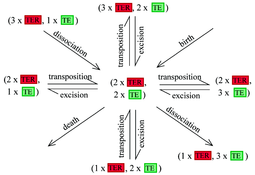
4. Marshall JM (2008) The impact of dissociation on transposon-mediated disease control strategies. Genetics 178: 1673-1682
http://www.genetics.org/content/178/3/1673.long
http://www.genetics.org/content/178/3/1673.long
2007
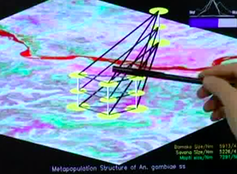
3. Marshall JM, Morikawa K, Manoukis N, Taylor CE (2007) Predicting the effectiveness of population replacement strategy using mathematical modeling. Journal of Visualized Experiments 5: 227
https://www.jove.com/video/227/predicting-effectiveness-population-replacement-strategy-using
https://www.jove.com/video/227/predicting-effectiveness-population-replacement-strategy-using
2006
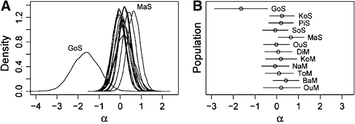
2. Marshall JM, Weiss R (2006) A Bayesian heterogeneous analysis of variance approach to inferring recent selective sweeps. Genetics 173: 2357-2370
http://www.genetics.org/content/173/4/2357.long
http://www.genetics.org/content/173/4/2357.long
2004
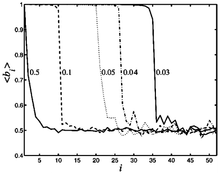
1. Wills P, Marshall JM, Smith P (2004) Genetic information and self-organised criticality. Europhysics Letters 68: 901-907
https://epljournal.edpsciences.org/articles/epl/abs/2004/24/epl8481/epl8481.html
https://epljournal.edpsciences.org/articles/epl/abs/2004/24/epl8481/epl8481.html
Copyright © www.MarshallLab.com 2024
